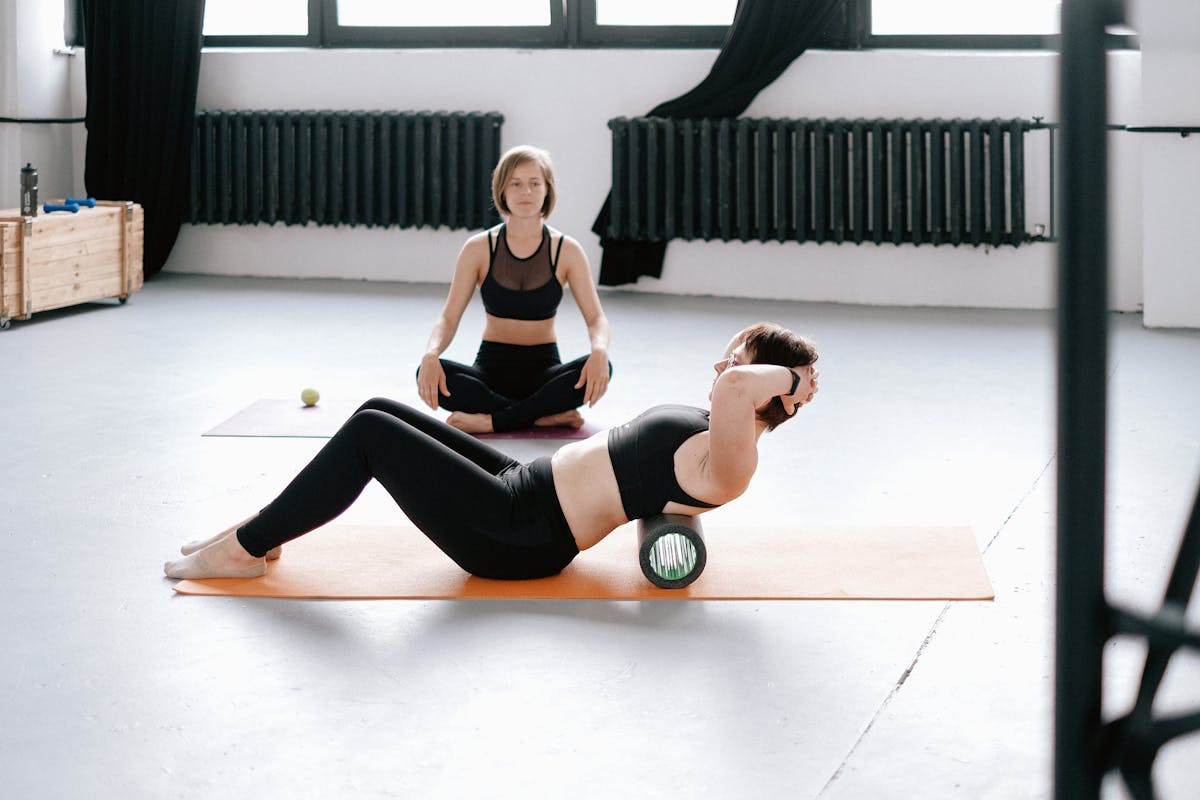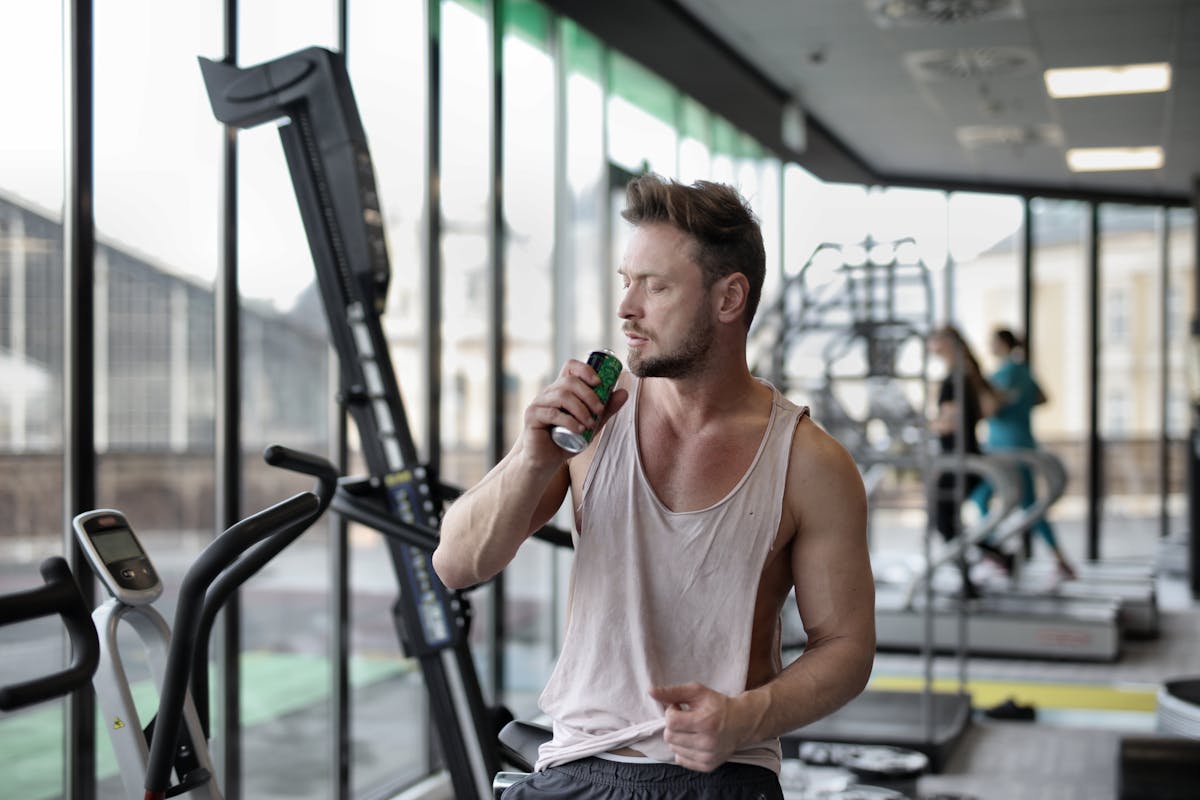If you are passionate about training and live an active routine, you must have already felt that discomfort in your body after intense physical effort. Or if you work sitting down for a long time, you may have felt that pain from muscle tension, right?
In this article, we’ll explore 7 practical and effective muscle relaxation techniques. Let’s get started!
Why is muscle relaxation essential?
Relaxing your muscles isn’t just a treat for your body. It’s essential for the proper functioning of your muscle fibers.
See the main benefits of including this practice in your routine:
● Reduction of post-workout pain – Techniques such as massage, myofascial release and stretching help to alleviate the discomfort caused by muscle soreness, including delayed onset muscle soreness (DOMS).
● Acceleration of muscle recovery – Methods such as self-massage and hot water bottles warm the muscle and improve blood circulation, promoting relaxation of muscle fibers.
● Injury prevention and improved sports performance – Stretching prevents contractures, promotes flexibility and improves sports performance when there is an improvement in posture.
Now that you understand the importance, check out the 7 practices to help your muscles relax and recover more efficiently.
1. Progressive Muscle Relaxation
A technique that involves contracting and relaxing different muscle groups one at a time. This practice is used to reduce physical and mental tension, promoting a state of calm and well-being.
It is widely used in therapies to combat stress, anxiety and even insomnia, teaching the individual to recognize and relieve signs of tension in the body.
● How to do it : Start by contracting the muscles in your forehead for 15 seconds, then slowly relax for 30 seconds. Move on to your jaw, neck, shoulders, arms, and so on down to your feet.
● Benefits : Reduces stress, helps relieve lower back pain and provides tension relief.
This technique, in addition to simplifying the relaxation process, can be done before going to sleep to improve the quality of sleep.
2. Muscle massage for pain relief
Massage used to be seen as a luxury, but now it is recognized as a therapy to treat some pains . Using specific techniques, it warms the area and helps to relax the muscles, improve blood circulation and promote a feeling of well-being.
● How it helps : Improves circulation, reduces tension, relaxes muscles, tendons and joints and speeds up muscle recovery.
● Extra benefits : Relieves stress, anxiety and may possibly help close the “pain gate” by stimulating certain nerve fibers, preventing the brain from sending and receiving pain signals.
Have you ever tried rolling a massager on sore spots while watching your favorite series? It’s a great idea.
3. Gentle stretches
Preventing tension and allowing your body to recover better after physical exertion. Never underestimate the impact of taking a few minutes to stretch at the end of your workout!
Recommended exercises :
- Trunk stretching : Relieves tension in the back.
- Neck stretching : Ideal for those who work in front of the computer.
- Extra benefit : Helps relax muscles before bed to ensure a more peaceful night.
4. Breathing techniques to release muscle tension
Who would have thought that something as basic as breathing could have such a profound impact on our bodies? Conscious breathing is capable of much more than we imagine. Not only does it help relax muscles and reduce stress, but it also helps the body regulate itself .
Breathing practices, used for centuries by different cultures, have the power to calm the autonomic nervous system, stimulating relaxation, reducing blood pressure, heart rate and even muscle tension . These exercises go further, promoting the release of our body’s natural opioids and benefiting both immunity and mental and cardiopulmonary health.
5. Hot bath and cryotherapy
Choosing between a hot or cold compress after a workout can make all the difference in your muscle recovery and in relieving pain or tension. Each method has its own specific benefits, helping your body recover more efficiently .
Let’s explore how these techniques can contribute to your well-being and physical performance!
● Hot compress : Relaxes tense muscles and improves the elimination of lactic acid, but cannot be used in the first 48 hours of an injury.
● Cryotherapy (cold compresses) : Reduces swelling, inflammation and bleeding. Helps by numbing the affected area, which can reduce pain from injuries or inflammation.
6. Myofascial release rollers
The famous “foam rollers” are incredible tools for releasing tension, relieving muscle pain and improving flexibility. Widely used in gyms, pilates studios, and even at home, these foam rollers have become increasingly popular for their benefits in muscle recovery and pre-workout performance .
Furthermore, they are ideal for complementing training, promoting relaxation and improving blood circulation, becoming powerful allies for those seeking well-being and performance.
● Benefits : Studies show that multiple sessions of self-myofascial release with a roller are effective in improving flexibility, reducing delayed onset muscle soreness, and accelerating muscle recovery.
Including this practice after high-intensity exercise can help relieve tension and improve mobility.
7. Yoga and light movements
Practicing yoga postures, combined with breathing control, is a powerful way to strengthen the body and make it more flexible, while calming the nerves and tranquilizing the mind. These movements not only impact the muscles, joints and skin, but also reach the entire body – glands, internal organs, bones, breathing and even the brain – bringing balance and serenity to everyday life.
● Benefits : Reduces stress, improves concentration, increases flexibility and energy and develops muscle strength at the same time.
However, to enjoy all of this safely and get the best results, the right guidance is essential.
Enhance relaxation with a complete routine
Consider combining several of these techniques for more effective recovery. For example:
● Start with a warm bath.
● Follow with gentle stretches and finish with 10 minutes of breathing techniques.
These simple daily precautions can transform your body and mind to face new workouts and challenges with determination and strength.
Your body is your greatest partner in training. Why not set aside some time to take care of it today? After all, you deserve to perform at your best!




12 thoughts on “Relieve your body and mind: 7 muscle relaxation exercises to combat pain”
Comments are closed.